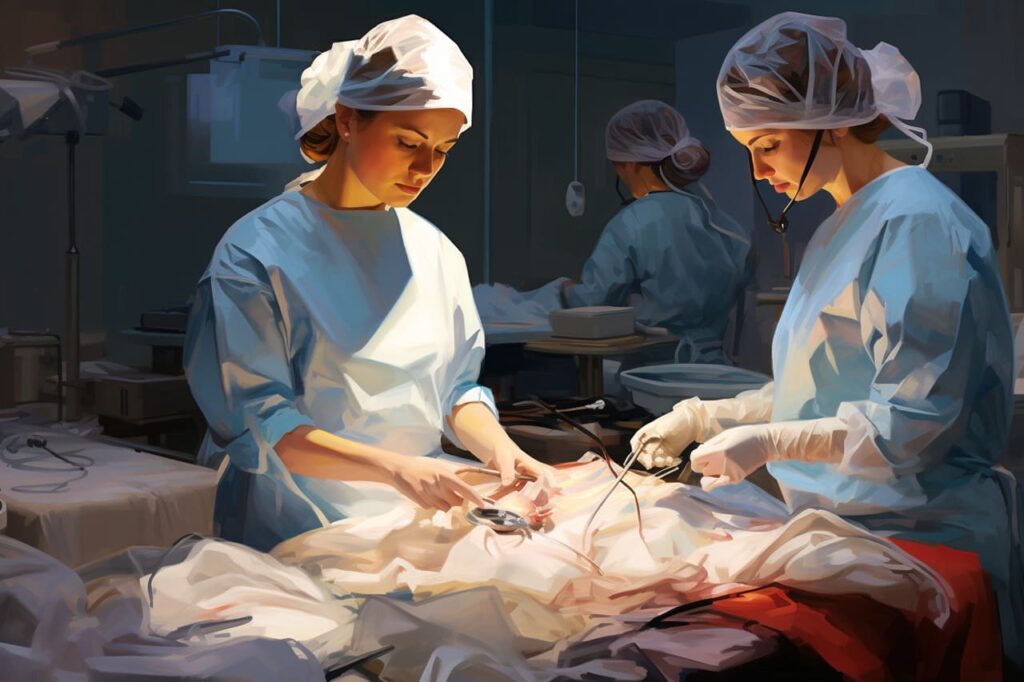Ergonomics in surgical technology is often overlooked. However, its importance can’t be overstated. Ultimately, the success of any surgery depends as much on the technical proficiency of the surgeon and medical team as it does on the ergonomics of their environment. This article explores the human factors in surgical technology and examines the role of ergonomics in improving surgical outcomes.
The Human Element in Surgery
Surgery is a complex undertaking that requires an incredible level of skill and precision. It takes a team of highly trained medical professionals with years of experience to make sure the patient is safe and the procedure is successful. But at the heart of every successful surgery is the human element. Whether it’s the technical proficiency of the surgeon, the skill and experience of the medical team, or the ergonomics of the surgical environment, the human element is key.
Ergonomics is the study of how people interact with their environment and how to make that environment more efficient and comfortable. It’s an often-overlooked aspect of surgery, but it plays a crucial role in the success of every procedure.
Ergonomics: A Key to Success
The human element in surgery is key to a successful procedure. The ergonomic considerations of a surgical environment can determine the level of precision and focus the medical team has during a procedure. The ergonomics of a surgical environment must be taken into account to ensure that the best possible outcomes are achieved.
Ergonomics helps create a safe and comfortable environment for the medical team. It helps reduce the risk of injury during a procedure and can improve the accuracy and precision of the surgeon’s movements. The right ergonomic design of the surgical environment can help the medical team perform at their best, resulting in better outcomes for the patient.
The Benefits of Ergonomic Surgical Technology
Ergonomic surgical technology can also help improve outcomes. Technology such as robotic surgery, 3D imaging, navigation systems, and laser-assisted surgeries can help create a more precise and comfortable environment for the medical team. These technologies can help provide a clearer view of the surgical area, reduce the risk of infection, and improve the accuracy and speed of the surgery.
Robotic surgery, for example, can help reduce the surgeon’s fatigue levels during long procedures. It can also allow for more accurate movements that are less likely to cause damage to the patient. The use of 3D imaging technology can also provide surgeons with a clearer view of the area they’re operating on, reducing the risk of mistakes.
Examining the Role of Ergonomics
Ergonomics is an important part of achieving successful surgical outcomes, but it’s often overlooked. Ergonomics helps create a safe and comfortable environment for the medical team, which can help reduce the risk of injury and improve the accuracy of the surgeon’s movements. It can also help improve the accuracy and speed of the surgery, which can lead to better outcomes for the patient.
Ergonomics can also help reduce the stress levels of the medical team. Stress can be a major factor in decreasing the accuracy of a surgeon’s movements and increasing the risk of mistakes. Ergonomic considerations can help make sure that the medical team is as relaxed and focused as possible, which can help reduce the risk of mistakes during a procedure.
How Ergonomic Can Reduce Stress and Injury
Ergonomic considerations can also help reduce the risk of injury and stress levels for the medical team. Injuries are a common occurrence in surgical environments, and they can occur due to an uncomfortable or inefficient environment. Ergonomic designs can help reduce the risk of injury by providing comfortable seating, proper lighting, and the right tools.
Ergonomic designs can also help reduce the stress levels of the medical team. Stress can be a major factor in decreasing the accuracy of a surgeon’s movements and increasing the risk of mistakes. Ergonomic considerations can help make sure that the medical team is as relaxed and focused as possible, which can help reduce the risk of mistakes during a procedure.
Adapting Surgical Technology for the Human Factor
Ultimately, the success of any surgery depends as much on the technical proficiency of the surgeon and medical team as it does on the ergonomics of their environment. Ergonomics is an important part of achieving successful surgical outcomes, and it should be taken into account when designing surgical technology.
Surgical technology should be adapted to fit the needs of the medical team and the patient. Technology should be designed with the human factor in mind, taking into account the ergonomic needs of the medical team and the patient. Technology should be tailored to the specific needs of the medical team and the patient, ensuring that the best possible outcomes are achieved.
Ergonomics is an important part of achieving successful surgical outcomes, and it shouldn’t be overlooked. Ergonomic considerations can help create a safe and comfortable environment for the medical team, reduce the risk of injury and stress levels, and improve the accuracy and speed of the surgery. By taking the human factor into account when designing surgical technology, we can ensure that the best possible outcomes are achieved for the patient.
Conclusion
Ergonomics is an often-overlooked aspect of surgical technology, but it’s an essential part of achieving successful outcomes. Ergonomics helps create a safe and comfortable environment for the medical team and reduce the risk of injury and stress levels. Technology should be designed with the human factor in mind to ensure the best possible outcomes for the patient.
